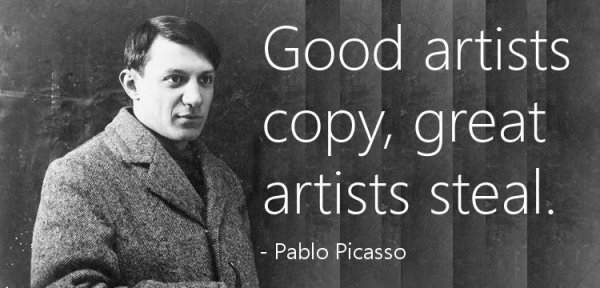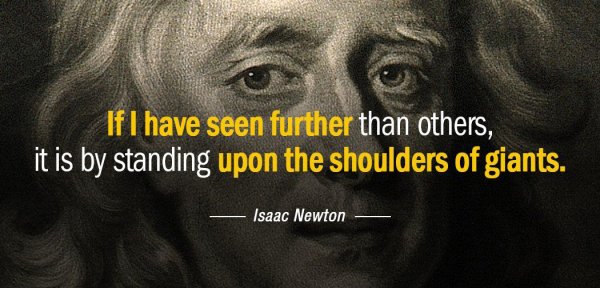Innovating in the Workplace: How to Get (and Stay) Creative
by Aden Andrus • September 3, 2020
Innovation is a real buzzword these days. Everyone knows that innovation is the key to running a successful business, but most people don’t consider themselves particularly innovative.
To make matters worse, most jobs do little to encourage innovation. Your company may praise and encourage innovative thinking, but when you do the same things all day, every day, it can be hard to stay in a creative headspace.
So how do you innovate in the workplace? Or, if you’re in a leadership position, how do you foster and support creative problem-solving?
Unfortunately, most people don’t have good answers to those questions. They don’t really understand how innovation works and often stifle the creative process without meaning to. As a result, their business stagnates and they don’t get the kind of results they’re hoping for.
But, it doesn’t have to be that way.
Whether you’re a grunt on the customer support floor, a marketing director in charge of coming up with new marketing ideas, or an executive-level decision-maker with the fate of your company in your hands, this article is for you.
I’ve spent my entire career innovating and my ideas have produced tens of millions of dollars in new revenue. In this article, I’m going to share some key principles that I use on a daily basis to stay innovative in the workplace.
Sound good? Let’s get started!
Understanding How Innovation Really Works
Before we start talking about ways to get into (and stay in) a creative frame of mind, we need to take a step back and talk about how innovation really works.
Contrary to popular belief, most innovations don’t appear out of nowhere. More often than not, they’re the result of looking at a problem in a new, different way.
The key to being truly innovative is to take existing ideas or solutions and apply them to problems in new ways. As Pablo Picasso put it, “good artists copy, great artists steal”.

Now, Pablo Picasso is widely considered one of the most creative, innovative artists in history, so clearly he’s not saying, “To become a great artist, steal other people’s pieces and try to pass it off as your own.”
Instead, he’s encouraging artists to steal ideas—to take good ideas out of their original context and apply them in new, innovative ways.
Sure, you can get along okay by simply copy what everyone else is doing, but if you really want to be innovative, you have to find new ways to do things. The easiest way to do that is to find things that are working in one context and apply them in a different one.
Making New Connections
For example, the iPhone wasn’t really the first smartphone. Neither was the Blackberry. The first smartphone was actually the Simon Personal Communicator:
Released in 1994—more than 10 years before the iPhone—IBM’s personal communicator had a touch screen and many of the same features and apps that we all love today.
In and of itself, the iPhone wasn’t all that innovative. What was innovative, however, was how the iPhone was designed and marketed.
Previous smartphones were clunky, awkward and widely viewed as toys for tech nerds. However, from his experience with the iPod, Steve Jobs knew that if he gave the iPhone a sleek, modern look and focused on the cool factor—rather than the technical aspects—of the phone, he could turn the smartphone industry on its head.
Basically, he asked the question, “What if we did the same thing with the smartphone that we did with the MP3 player?”
By finding an overlap between what was at the time two very different products, Jobs was able to turn the smartphone industry on its head. The idea of a smartphone was hardly new, but the way the iPhone looked, felt, and was marketed was new. And that simple innovation changed the world.
On the Shoulders of Giants
This principle is true across industries and centuries. Even Sir Isaac Newton, who famously came up with the Law of Gravitation after an apple randomly fell on his head, proclaimed “If I have seen further than others, it is by standing on the shoulders of giants.”

Coming up with new ideas is hard. Think about it. If you had a brilliant idea for a new light fixture design, imagine how hard it would be to figure out how to bring that idea to life if you had to start from scratch and do everything on your own.
Do you know how to generate electricity? Manufacture light bulbs? Wire a light fixture? Create a mold that can be used to manufacture your fixture thousands of times?
No matter how new or original an idea might seem, it almost always builds on something someone else came up with first. So, don’t waste time or energy trying to be “completely original” or “think outside of the box” in such big ways that you lose touch with the realities of what you’re doing.
Originating vs. Optimizing
Even Thomas Edison, who ran thousands of tests on hundreds of materials before perfecting the lightbulb…didn’t actually come up with the concept of the lightbulb himself.
Electric lighting was hardly new in the late 1800s, but Edison gets the credit because he figured out how to combine a variety of ideas in innovative ways that made it much safer, more affordable, and accessible than it had been in the past.
Despite all of Edison’s hard work, he was successful only because he learned from what others had done, came up with his own spin on things and figured out how to combine things in new and innovative ways.

For many people, innovation feels big and scary because they think it needs to happen in isolation. They believe that they need to have some big, groundbreaking idea that comes out of nowhere.
They couldn’t be further from the truth.
Most of the big breakthroughs we celebrate today weren’t the result of isolated inspiration. Instead, they occurred because an innovator made a new connection using existing information or technology.
More often than not, the most successful innovators are the ones who perfect an idea—not come up with the original concept. If you get too focused on being unique, you can end up discounting a lot of valuable, innovative ideas that may be much more valuable than a truly “original” concept.
Expanding Your Horizons
With all of that in mind, one of the best ways to be innovative in the work place is to constantly expand your horizons. If there’s one thing I’ve learned in life, it’s that nothing you learn ever goes to waste.
Want to come up with new marketing ideas for your business? Try looking at businesses in very different industries. Who knows? You just might discover some new ideas none of your competitors have ever considered.
Looking to improve efficiency? Find a way to shadow someone in a high-volume industry. Fast food chains and manufacturing plants are masters of minimizing time and maximizing profitability. Even if you can’t spend time at one of these places, simply learning about how they do things may give you some unexpected insights into your own processes.
Trying to be more creative with your product line? Figure out what other types of products your customers are buying and then see what you can learn from their products.
The point is, if the easiest way to innovate is to stand on the shoulders of others and you can only draw on what you know, then the more you broaden your horizons, the simpler it will be to make connections and come up with new ideas.
You can’t draw water from an empty well and you can’t innovate if you spend all of your time doing the same things day in and day out. To find new connections, you have to do and experience new things, so get out there and try something different!
Think About Things from Different Angles
Similarly, when you’ve done things the same way for a long time, it’s easy to get in a rut. Your brain gets programmed to think about things a certain way and that sort of repetition is the antithesis of creativity.
To shake things up, you have to take a step back and look at things from a different perspective. Don’t be afraid to get wild and wacky.
Here are a few ideas to get you started:
- Make your business or product into a meme
- Ask a child to describe your business
- Paste text from your website, instruction manual, ads or reviews into a wordcloud generator (like this one) and see what comes out
- Come up with an outlandish goal for your business or department and then try to come up with an at-least semi-realistic way to achieve that goal
- Shadow co-workers in various departments to see what they’re dealing with on a day-to-day basis
- Ask a customer to try and sell your product to you
The point is, you need to find ways to think about things in new and different ways. When you force your brain to think about things differently, you force it back into a creative, problem-solving mode. The more time you spend in that mode, the more likely you are to come up with innovative ideas.
As you explore your business from new angles, be careful not to quash your creativity. You’ll have a lot of bad ideas, but if you put pressure on yourself to come up with good ideas—rather than just coming up with ideas—your brain will switch from creative mode to “evaluate and assess” mode.
That’s important, too…just not when you’re trying to be innovative.
The more ideas you come up with, the less attached you’ll be to any particular idea and the more willing you will be to find new solutions and move past your limitations. And that is the key to effective innovation.
When I run brainstorming sessions, I encourage people to go with anything that comes to mind. Be absurd. Laugh. Push the limits of reality. Most of your ideas will be bad or outright stupid, but amidst all of the silly, irrational ideas, you’ll often discover some unusual connections that are truly innovative and worth trying.
Conclusion
Innovation is the lifeblood of business. You might be able to copy what everyone else is doing and get by for a while, but if you really want to succeed, you have to innovate.
Huge businesses have been built off of very small innovations, so your ideas don’t have to be world-changing to be worthwhile. You just have to find ways to combine ideas in new ways.
So, whether you’re trying to come up with new marketing strategies or rethink some other aspect of your business, the key is to look for new connections. Don’t worry about reinventing the wheel. Instead, focus on finding ways to improve on what you’ve got or take things in a new or unexpected direction.
If you can successfully cultivate this kind of mindset, it’ll become easier and easier over time to come up with new ideas and ways to do things. Your business will stay at the top of its game and you’ll be creating trends…instead of following them.
By the way, if you’d like help coming up with new ideas for your marketing, one of the best options is to get an outside opinion, so why not ask us to give you a hand here or in the comments? We’d love to help.
How do you stay innovative? What do you do to keep your employees thinking creatively? Leave your thoughts in the comments.





